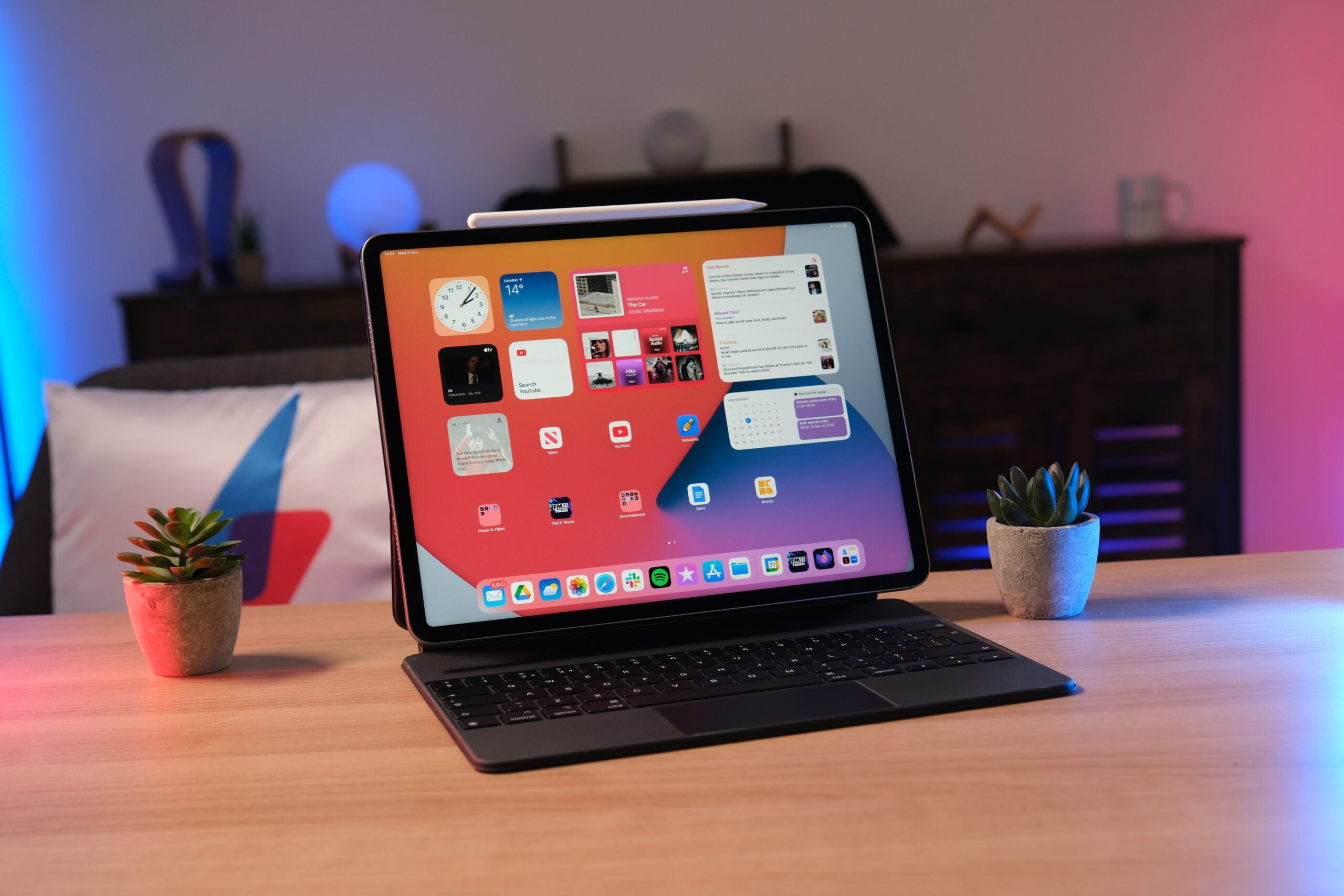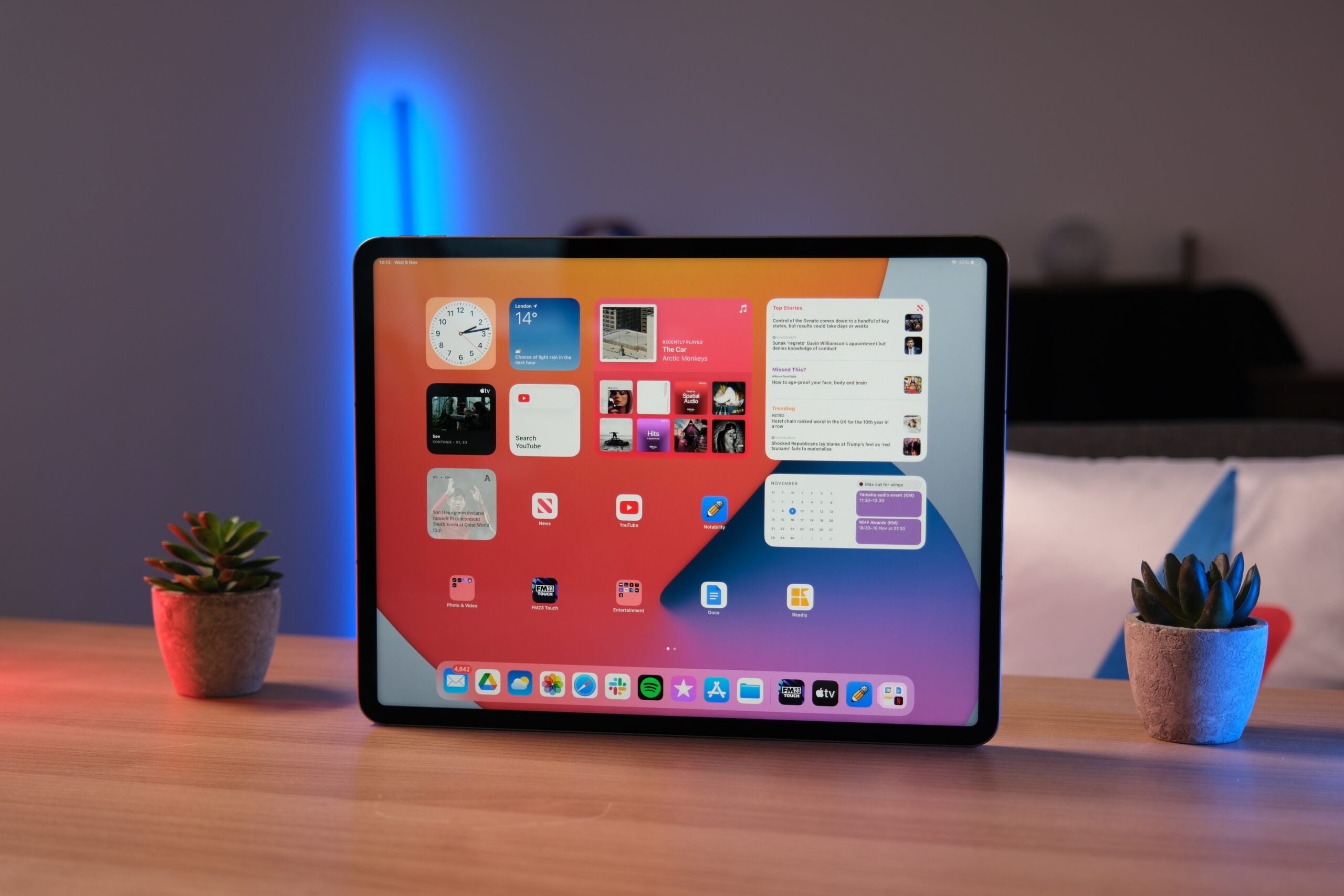Apple offers a wide range of iPads and MacBooks, including budget-friendly devices for everyday use and those designed for professional needs.
Apple’s iPad Pro launched in 2015 alongside the slightly cheaper iPad Air and was offered as an option for busy professionals, such as Digital Designers and Producers. In comparison, the MacBook Pro launched back in 2006 and was the first Apple computer to take on the MacBook title.
Both the iPad Pro and MacBook Pro are the most premium options in their respective product lines and therefore the most expensive, but is one better than the other?
We’ve compared both the iPad Pro and MacBook Pro ranges as a whole to highlight the main differences between the two.
Design
Naturally as a tablet, the iPad Pro is much lighter than the MacBook Pro and is better suited if you intend on using your device predominantly on the move. The latest iPad Pro weighs up to 579g whereas the latest MacBook Pro can weigh between 1.55kg and 2.16kg (depending on the model and chipset).
The iPad Pro is currently available in either an 11-inch or 13-inch model, with the latter option replacing a previously available 12.9-inch iPad Pro. The MacBook Pro is currently available in either a 14-inch or 16-inch model.
Despite predominantly being a touchscreen tablet, the iPad Pro is compatible with extra accessories to enhance the experience including Apple’s Magic Keyboard, which is useful if you’d like to indulge in a bit of laptop-style productivity. In fact, if you invest in the iPad Pro M4 there’s a revised Magic Keyboard which includes a glass trackpad with haptic feedback and a 14-key function row.
The new iPad Pro is also compatible with the new Apple Pencil Pro which includes new features such as barrel roll, a new gyroscope that allows precise control of shaped brush tools simply by rotating the pencil, and Find My support.
Perhaps reflecting the “Pro” label, both the MacBook Pro and iPad Pro are usually only available in more muted colours with options sticking to Silver, Space Grey or Space Black depending on the model.


Screen
All iPad Pro models have at least featured Apple’s Liquid Retina display, however the newest iPad Pro boasts an Ultra Retina XDR display which has been hailed by Apple as the “world’s most advanced display”.
The Ultra Retina XDR display was designed to push beyond the capabilities of the Liquid Retina XDR display found in both its predecessor and the most recent MacBook Pro lineup. The Ultra XDR Retina Display essentially is Apple’s term for Tandem OLED technology, which stacks two OLED screens on top of one another, combining the light from both to boost the full-screen brightness.
Apple explains that this “enables sub-millisecond control over the colour and luminance of each pixel” which should allow for the screen to feel more responsive and fluid, making the iPad Pro a great choice for creative professionals.
The latest MacBook Pro M3 models instead have a Liquid Retina XDR display which utilise mini-LED technology. This essentially is an LCD panel that uses more LEDs that are smaller and individually dimmed to achieve a better contrast ratio than previous Retina displays.


Performance
Like the MacBook Pro range, the iPad Pro has run on Apple’s desktop-level M-series chipset since the 5th Gen model launched back in 2021. Starting with M1, followed by the M2 chip in the 6th Gen, the iPad Pro is currently the only Apple device running on the newest M4 chipset at the time of publishing.
Despite the most up to date iPad Pro currently running on the new M4 chipset, and the MacBook Pro still running on the M3 chipset, the two devices utilise entirely different operating systems: iPadOS and macOS. iPadOS has more in common with the iPhone operating system, iOS, and is unable to run macOS apps, whereas macOS is able to run more intensive programs as well as iPadOS apps.
Unlike the iPad Pro and even MacBook Air, the MacBook Pro can also be picked up with the Pro and Max versions of the M chip too.
The Pro version of the M chip promises faster performance than the standard, with the most recent M3 Pro providing “extremely fast performance when working on more graphics-intensive tasks”.
The M3 Max goes even further and was “designed for pros needing the highest performance available in a MacBook Pro with industry-leading battery life in a pro laptop”.
Battery
The iPad Pro has remained consistent with its battery life since its inception, offering up to 10 hours of watching video or surfing the web with Wi-Fi.
In comparison, the MacBook Pro’s battery life depends on both the chip it’s running on and the size of the device.
Using the most recent M3 line-up as an example, the MacBook Pro M3 promises up to 22-hours of Apple TV playback. The 14-inch MacBook Pro M3 Pro and Max offer slightly less, with up to 18 hours video playback. Finally, the 16-inch MacBook Pro M3 Pro and Max actually match the standard M3 chip with 22-hours of Apple TV playback.
Similarly, while the MacBook Pro M3 is fast-charge capable with 96W USB-C Power Adapter, the 16-inch MacBook Pro M3 Pro and Max kick things up a notch with an even faster 140W USB-Power Adapter.




